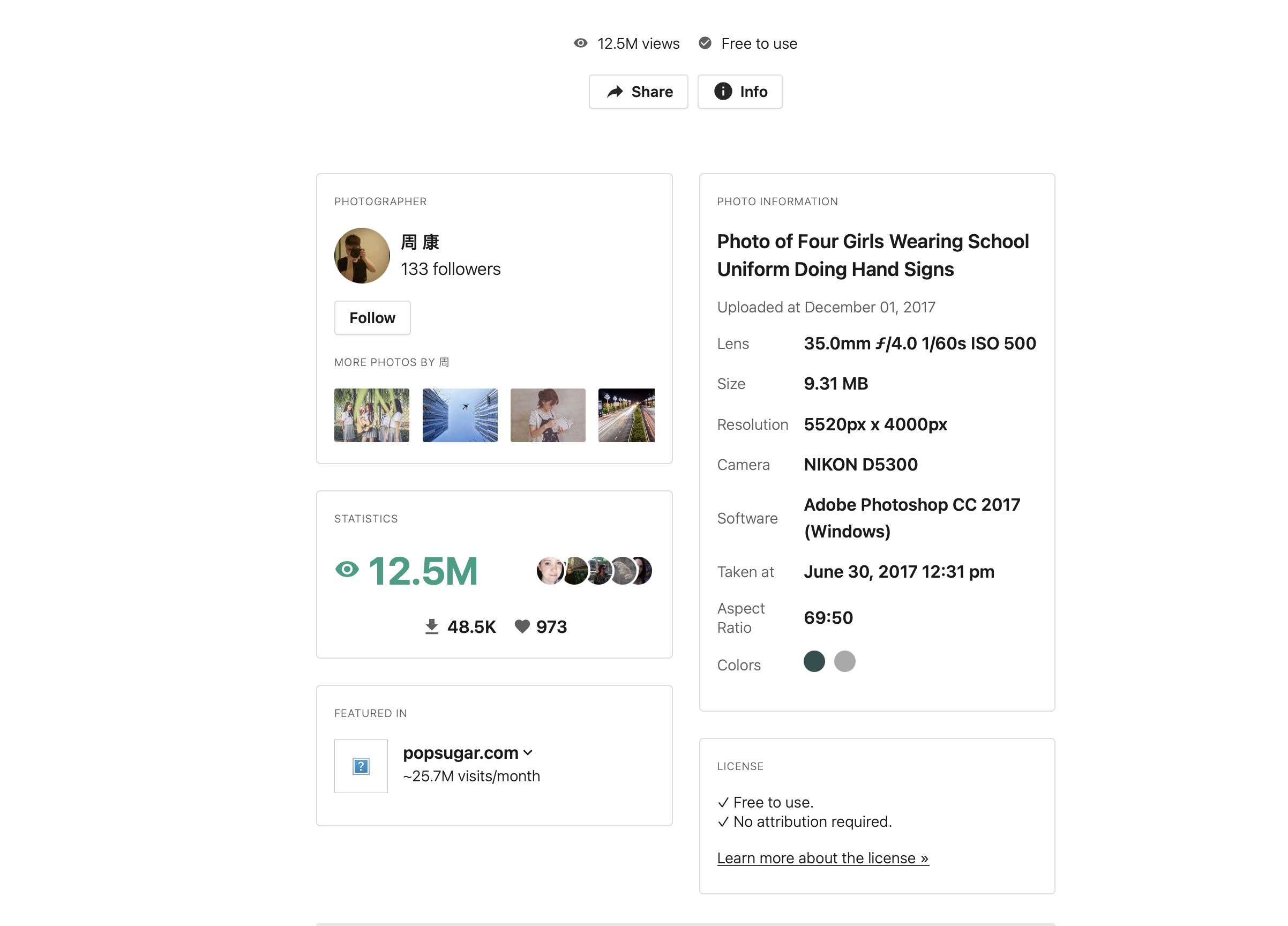
From Content Consumer to Content Creator

Hi and welcome to the world of selling and reselling Stock Photos.Thanks to the internet, it is now possible for hundreds of people just like you to make really good money using your digital or film camera and creating photos that sell. Even if you have just getting started on your journey as a photographer and have no clue about stock photography, this article will step you through everything you need to know about taking pictures, uploading them to your computer, and from there onto the Internet. The Internet is your key to making money both through sales and residual incomes.
The consumer digital camera demand is taking off and pushing image quality higher, faster Internet access is becoming more widely available, and demand for Web content is booming: Everybody and every business wants a website. There is a huge demand for visual content from people who have low-to-no budgets. In other words, it is a perfect storm. How can you not start sharing your visual content with one another over the Internet?
I won’t promise that you will make a fortune through licensing your photos as royalty-free stock. I do promise that there is a world of opportunity that exists right now, where you can get feedback on your photography in a way you never experienced; can meet and interact and learn from people walking the same path all over the world; and have the potential to earn a residual stream of income that I have seen range from “mad” money to six figures.
So let’s begin.
Photo of Four Girls Wearing School Uniform


The statistics speaks for itself and the reason for the photos success is its compositional simplicity.The concept looks very simple and straightforward. It also has flexibility for the placement of text and other design elements on top of the image


What is stock photography?
Stock photography can be simply defined as being a store of photographs that already exist available for sale to a commercial market. Photographers have a range of pictures on a huge range of subject uploaded through a directory or their own site and they also sell the various rights to those photographs to customers for either online or offline use. For example you might decide to place photos you already have online with a web site that sells one- time-use rights to pictures.. The joy of this form of payment is that as the amount paid can be quite small (sometimes 10 cents per use) your picture can be resold and sold again for as long as you want.
From billboards to Web banners, from blogs to magazines, from annual reports to promotional flyers, stock images are used just about anywhere you see images. Advertising makes up one of the most visible uses for stock images, and it is not unusual to start recognising certain images, models, and co~contributor styles as you become familiar with the content available on various microstock sites.
What’s in It for You?
The unique opportunity offered by microstock is that fact that it is so accessible to image creators and image consumers alike. There is an unprecedented level of feedback at multiple points in the process, which provides you with an opportunity for rapid learning and growth. In addition, as license fees have steadily increased over the years, there is greater opportunity to earn a steady stream of income that is largely limited only by your own ability to provide content people want to license.
Due to the accessible price point for licenses and the low barriers to entry for contributors, the number of people involved in microstock is quite staggering. There are literally millions of people involved in the creation and licensing of microstock files. iStockphoto alone reports that, on average, a file is downloaded somewhere in the world every second of the day.
Before your files make it in front of the buying public, though, they have to pass through a review process where each file is examined by a trained inspector who looks over every pixel for composition, technical, and legal problems.
Once your files have passed inspection, they are immediately available to be licensed by the world. Most agencies will also provide a range of statistics—from number of views to sales and member ratings—to help you measure progress. I think most will agree that the most important statistic is sales, but views—the number of people who actually clicked on your file to look at it a little closer— has its own value!
So what type of Pictures Sells Best?




As mentioned earlier it is possible to sell pictures about anything, but strangely it is “things” that seem to sell well through stock photography sites. For example photos of electronic goods, businessmen and women conducting business, and money are often snapped up by web site developers who are looking for graphics for their web sites. In the electronic gadget line alone it is possible to sell photos of items you have around your home: Computer components and peripherals, DVD and CD players, MP3 players, televisions, printers, cameras and even mobile phones.



For example a picture of two hands shaking or clasped together makes an excellent shot that can be used by a variety of users, while the anonymous businessman using his cell phone in front of a skyscraper is also a good seller. If you can find a unique way of jazzing up a photo of money they are often in hot demand by web marketers.The sky is the limit! You may feel that the market is already saturated with stock photos~ the short answer is “NO”! Just look at the logistics of it. Your market is global; there are hundreds and thousands of people coming on to the Internet every single day. There are new markets and new customers for your photos looking for your products, so don’t give that problem another thought.
Quality vs Quantity

Focus on quality first and let quantity take care of itself over time.However, you are in complete control of how much content you create and submit over time. There are no minimum requirements to keep your account going, though various sites have different maximum amounts you can submit in a given time period.
You can also take the route where you create constantly and upload continually. This has the benefit of generating a great deal more feedback in a shorter period of time, and the greater potential of more of that feedback coming in the form of revenue. End of the day its largely a numbers game. But I am a I believer in high quality and useful imagery that is key-worded effectively, can be just as rewarding for those not interested in high-volume output.
Creative Photo Editing Bundle: Luminar 4 AI Software + Aurora HDR + 1-click Looks + California Sunsets|Download for Mac and WindowsStock Photography Licensing Models

Every industry has its vocabulary that every new entrant should learn as quickly as possible in order to participate and succeed. One of the most important concepts to wrap your brain around first is called licensing. These models determine the way in which your images can be used and how the fees are determined for the image. There are advantages and disadvantages to each model.
The three selling models are
- Rights managed (RM)
- Regular royalty free (RF)
- Micro-payment, royalty free
The Top Microstock Sites to Start With

From my own experience, and from following the experiences of others over the years, I believe there are five microstock sites that are worth checking out when you are getting started:
Each of these sites has established itself in the industry. They support large (and growing) image libraries, and, based on publicly available data, appear to deliver the largest returns to their contributors. Check out the industry leaders, read all the fine print, talk to other contributors who are already involved and have years of experience.
Also check out the Microstockdiaries.com, which is a blog written by Lee Torrens, who has been a participant and thoughtful observer of the microstock industry for years. He is a trusted voice among contributors and has a lot of valuable information to share.
Emart Photo Video Studio 10Ft Adjustable Background Stand Backdrop Support System Kit with Carry BagParting Words

The most significant obstacle to overcome when you produce photos for stock is how you judge your own finished work. Everything from the pre-production visions in your mind’s-eye, to what happened when the photos were captured, to everything you put into them during post-production can affect your perception of the final output.It is essential to critically view your pictures. Evaluate focus, noise, and sharpness, in the context of its quality of composition, lighting and subject matter, all the while keeping vigilant for legally problematic issues.
It is very rewarding when you see your photo’s incorporated into someone else’s project. Since so much of microstock content ends up being used in online projects, it isn’t that difficult to discover some of them for yourself. There’s one major caveat: it can take quite a bit of time before you actually find anything.
People who focus first on the quality of their submissions, and then branch into diverse subject matter, before finally shifting to building up quantity tend to find greater success and satisfaction from the process. If there were any universal recipe for success, this is as close as it gets.
Let the authenticity in your work be the engine of your success, and have fun!
Disclaimer: All recommendations are impartial and based on user experience, with no bias to the products or the brand. The products in this post may contain affiliate links.
Good one
Thanks.
Thanks
[…] Modernism 3 Best Books of all times to pick up this Weekend: Worth staying awake to read ! Take Stock: Creating Photos that Sell and Resell Photography Tips to Help you Produce some Stunning Portraits Psychic Reality in Modern Art : My […]